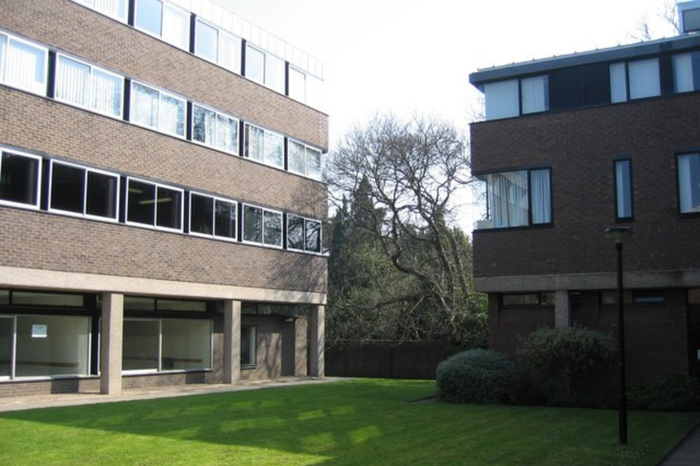Dropouts at Cambridge fall to five-year low
Across the country, Cambridge has the lowest dropout rate at 1%

The number of undergraduates who dropped out of their degree at the University of Cambridge fell to the lowest level in at least five years in 2023/24, Freedom of Information requests can reveal.
Just 211 students discontinued their undergraduate studies in the most recently recorded academic year, down from 295 in 2019/20, a 28% decline.
The annual number of student dropouts has decreased steadily each year since the COVID-19 pandemic. In 2020/21, 268 students left their course early, with 246 in 2021/22 and 224 in 2022/23, respectively.
The University defines “discontinued” students as those who withdrew for personal or health reasons, excluding those who failed academically or died.
Despite this drop, the number of first-year students discontinuing their studies reached their five-year peak in 2023/24, with 26 freshers and only 12 from other years. By contrast, 18 non-freshers discontinued the year before.
Annual intermission numbers also declined significantly, falling from a peak of 436 in 2021/22 to 268 in 2023/24. Meanwhile, the number of tripos transfers also reached a five-year low in 2023/24 with 211 in total, following a steady decline from 295 in 2019/20.
The undergraduate degrees with consistently high tripos transfer rates included Chemical Engineering (a five-year mean average of 5.3%), Linguistics (4.8%), History and Politics (4.5%) and HSPS (4.3%). At the other end of the scale were Music (0.2%), Architecture (0.3%), and Engineering (0.7%).
Across the country, Cambridge reportedly has the lowest dropout rate at 1%, with Oxford University second at 1.2%. Meanwhile, the London Metropolitan University scored the highest at 18.6%, followed by the University of Bolton at 15.4%.
These figures come just weeks after proposals to alleviate a “culture of overwork” in the University were passed by the governing body. These include provisions to review tripos rankings – the practice of telling students where they placed in annual exams – and abolish Saturday lectures.
Elleni Eshete, the Students’ Union Welfare and Community Officer, told Varsity: “On one hand, the decreasing numbers could reflect the continuously improving and broadening welfare measures offered by the student support services which could help students excel in their chosen studies where possible.
“For example, I have been part of implementing an incoming project with the NHS to support students with ongoing and complex mental health needs. On the other hand, student life can be a vulnerable time in many ways. There could be added pressure on students to finish their degrees sooner; especially given the current precarious and volatile socio-economic times,” Eshete continued.
A spokesperson for the University stated: “The decline in numbers of intermissions, transfers and withdrawals reflects our ongoing commitment to supporting students through their time at Cambridge and the University is proud to have the highest continuation rate (99%) of all UK Universities.
“In recent years, the University of Cambridge has worked to enhance student support services, and we remain committed to providing an environment where every student has the opportunity to succeed,” they added.
The data, drawn from HESA student returns between 2019 and 2024, exclude students who were writing up, dormant, on exchange, or not formally registered. Dropout numbers reflect only those who left for health or personal reasons, including transfers to other universities, and do not include academic failures or deaths.
Intermission data counts students who paused their studies within a given year, excluding those who also dropped out, with each student counted once per academic year. The University only gave subject-specific data on tripos transfers.
Last year, Varsity reported that the Asian and Middle Eastern Studies (AMES) department was accused of “toxicity,” with dropout and transfer rates remaining high: around one quarter of AMES students have dropped out or transferred degrees since 2013 due to unmanageable workloads and poor mental health.
 News / Cambridge students accused of ‘gleeful’ racist hate crime4 December 2025
News / Cambridge students accused of ‘gleeful’ racist hate crime4 December 2025 News / Uni redundancy consultation ‘falls short of legal duties’, unions say6 December 2025
News / Uni redundancy consultation ‘falls short of legal duties’, unions say6 December 2025 News / Churchill announces June Event in place of May Ball3 December 2025
News / Churchill announces June Event in place of May Ball3 December 2025 News / Cambridge cosies up to Reform UK30 November 2025
News / Cambridge cosies up to Reform UK30 November 2025 Comment / Don’t get lost in the Bermuda Triangle of job hunting 24 November 2025
Comment / Don’t get lost in the Bermuda Triangle of job hunting 24 November 2025









